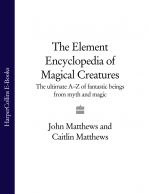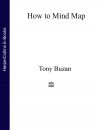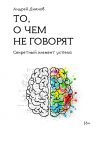Правообладателям!
Представленный фрагмент книги размещен по согласованию с распространителем легального контента ООО "ЛитРес" (не более 20% исходного текста). Если вы считаете, что размещение материала нарушает ваши или чьи-либо права, то сообщите нам об этом.Читателям!
Оплатили, но не знаете что делать дальше?
Текст бизнес-книги "The Element Encyclopedia of Magical Creatures: The Ultimate A–Z of Fantastic Beings from Myth and Magic"
Автор книги: John Matthews
Раздел: Жанр неизвестен
Текущая страница: 5 (всего у книги 7 страниц)
Animal Mounts
Gods and goddesses in many mythologies are closely associated with the animal which becomes their mount, taking them across land and sea, and into otherworldly regions. The powers of the animals are frequently imparted to – or in the service of – the gods, thus emphasizing their nature or deeds.
The magical horse Aonbarr that bore Manannan mac Lír, the Irish god of the Otherworld and the sea, could gallop across land or sea. Aonbarr’s name means ‘unique supremacy’ or ‘singular foam’. The white sea horses of every incoming wave belong to Manannan.
In Scandinavian mythology Freya, the goddess of lovers, rides in a chariot pulled by cats, a wonderful image of how love yokes even the most unruly. Thor, the god of thunder, has a chariot pulled by goats called Tanngrisnir and Tannostr. These goats proved useful on Thor’s visit to Utgard where they were killed and cooked before Thor resurrected them.
In Hindu mythology, there are many gods who ride upon animals; these are commonly called ‘the vehicle’ of the god. Brahma, the creator god who is the source of space and time, rides upon the swan or goose of knowledge which is called the Hamsa. The great and terrible mother Durgha rides on a lion to overcome the great buffalo demon, Mahisha, having no more mercy on him than a lion would show. Shiva, the Dionysian but ascetic god who breaks things in pieces, has the bull, Nandi as his mount, because he has triumphed over the lower nature of man, as all good yogis must do. Nandi is the joyful wanderer who is the embodiment of justice and virtue, which are the qualities which make the strong gentle. Nandi is shown as a bull lying down in many Hindu temples, where worshippers touch his genitals, which are a source of life. He is one of the teachers of music and dancing. The Garuda, half man, half vulture, is ridden by Vishnu, the god who preserves all things. Garuda imparts courage and represents the utterances of the sacred teachings or Vedas, for those who read them are transported upon the wings of wisdom and with the force of lightning.
ANIWYE
This huge and fearsome creature, resembling a giant skunk, is found in the folklore of the Ojibwe people of the United States. Armed with the characteristic pungent spray of its normal-sized brethren, the Aniwye hunts human prey and sprays them to death. It is able to understand and communicate with human beings.
The Aniwye approached a certain village and, having seen it coming, all the inhabitants fled, leaving behind one old woman who was too infirm to travel. When the Aniwye arrived in the village, it tore off the roof of her house and demanded to know where the rest of the tribe had gone. When the woman refused to speak, the Aniwye declared that it would cure her of her infirmities for good: it did so by spraying her to death.
ANJANA
One of the sacred white elephants of the Hindu mythology of India. Anjana, also known as Saumanasa, is the guardian of the Western quadrant of the world with the god Varuna standing on his back. (See also Airavata.)
ANJING AJAK
The name of a giant werewolf in the folklore of the people of Java. Like its Western counterpart, it is considered a human being whose evil nature transforms it into the shape of a great wolf with a taste for human flesh.
ANT
Ants are considered sacred among numerous cultures, and are especially prized for their industry, thrift, providence and forethought. In Chinese lore, the ant is considered a righteous creature and represents orderliness, patriotism and subordination to authority. However, since white ants can damage the rice crops, the god of war is sometimes invoked against them.
Among the Hindu, the ant is an example of the transience of existence, and is associated with the cult of the dead. In Zoroastrianism, the ant belongs to the dark forces of Ahriman and is the enemy of agriculture. In classical Greek tradition, the formidable Myrmidon warriors were said to be descended from ants or, according to Strabo, they were men transformed into ants after a plague had decimated the island where they lived. Among the Native American people, ants are respected for their patience, planning, building skills and aggression coupled with stamina. The ant is also said by them to have developed its narrow waist through self-denial, having provided food for the people who were forced underground during a cataclysm in the pre-modern
King Solomon once came with many men on a flying carpet to the Valley of the Ants, and they discovered to their horror that these insects were as large as wolves. However, the ants were equally terrified by the sight of the king’s flying carpet and the people on it, for they had never before seen human beings. A queen governed these ants, and when she discovered the exalted status of her visitor, she ordered her subjects to pay their respects to the king. When King Solomon landed and stepped from his carpet, all the ants sang out in unison: ‘Long live the king of all the animals and insects. Praise the Lord!’ Then the King of the humans and the Queen of the ants greeted one another cautiously. Solomon asked if there was anything they feared. ‘I fear only God,’ replied the Queen, ‘In case of danger my soldier ants would gladly sacrifice their lives on my behalf.’ On another occasion, Solomon heard how the ants had dug a pit so that an elephant fell into it, where it was consumed. They did this because the elephants had boasted that it was the duty of the ants to avoid their feet. Solomon admonished the elephants, telling them henceforward to respect the insects.
world. Quetzalcoatl, the Central American god of the elements, turned himself into an ant to steal maize, which the insects had hidden in a mountain, in order to bring it as a gift to humanity. The Pima tribe of South Arizona divides itself into three groups: Red Ants, White Ants and Black Ants, each of which has its own laws and customs, venerating the respective insect. Among the tribes of West Africa, ants are messengers of the serpent god, while for the Ibo of Nigeria the white ant or termite is sometimes represented as a spiritual ally that can be invoked to destroy the crops of personal enemies. Among the people of China, Persia, India and Greece, ants are also the guardians of treasure. Biblical tradition associates the ant with wisdom: ‘Go to the ant thou sluggard; consider her ways and be wise’ (Proverbs 6: 6) and ‘There be four things which are little upon the earth, but they are exceeding wise; the ants are people not strong, yet they provide their meat in the summer’ (Proverbs 30: 24–5).
ANTELOPE
In Sumerian and Semitic mythology, the antelope is a shape adopted by the gods Ea and Marduk while Ea-Oannes is considered to be ‘the antelope of Apsu’ – ‘the antelope of creation’. The antelope is also sacred to Astarte, the goddess of the moon. In ancient Egypt, the antelope was sacred to the goddess Isis and at times represented both Osiris and Horus. As a desert animal it was also sacrificed to Set. Throughout Asia Minor, the antelope was associated with the moon and the Great Mother. In Hinduism, it is an emblem of Shiva, and the gods Soma and Chandra have chariots drawn by antelopes. The Greek writer Strabo described it as being somewhere between a stag and a ram but swifter than either. Among the Native Americans, the antelope is a totem animal, particularly for the Plains Indians and the Comanche tribe. The Hopi tribe have a yearly ceremony in which societies representing Antelope and Snake enact a ritual in which antelope boys greet snake maidens. A mystical marriage is then enacted between these representatives of the animals. Antelopes running are said to stimulate thunder and rain-bearing clouds and, for this reason, they are considered symbols of fertility. The fast-running Antelope was one of the animals that helped Coyote steal fire from the Fire People in a story from British Columbia in Canada.
Several tribes in Africa regard the antelope as a significant animal as it is known to be a form taken by gods and only the creature itself knows where these gods are to be found. The bushmen of the Kalahari desert tell how Mantis created the antelope known as the Eland.
In heraldry, the antelope appears as a supporter, but has little resemblance to the actual creature, since it has the body of a stag, the tail of a Unicorn and the head of a heraldic tiger with serrated horns and a tusk protruding from its nose. In the language of heraldry, it is said to represent strength and fierceness.
ANT-LION
In Middle Eastern lore, the Ant-Lion had the face and front body of a lion and the back parts of an ant. This beast was said to have had a carnivorous father and a vegetarian mother, but because the Ant-Lion had the tendencies of both parents, it died because there was no food that suited its condition. As a creature of two natures, it is said to be symbolic of ‘double-minded man, unstable in all his ways’. The Ant-Lion derives from a mistranslation from the Book of Job (4: 4) from the Septuagint which uses the Arabian word myrmex for ‘lion’ in the verse, ‘The old lion perishes for lack of prey.’ This was so like the Greek word for ‘ant’ that the mistranslation resulted in all kinds of speculation about this mysterious Biblical animal.
However, naturalists have identified a species of neuroptera (four-winged insects such as dragonflies and lace wings) by the name of Antlion after their extraordinary behaviour. The antlion larvae digs a pit in loose soil, lining the tunnel with fine sand so that escape is impossible. It then buries itself at the bottom of the tunnel with only its head and open jaws remaining above the surface. Any unwary prey falls into the tunnel straight into its mouth. When above the ground, antlion larvae leave trails that have helped give it the nickname of the ‘doodlebug’.
ANTUKAI
According to the Native American people of Oregon in the United States, this creature resembles an otter, but is of a gigantic size. It was originally a grizzly bear, but having fallen into the clutches of the lake serpent Amhuluk, it was transformed into its present shape.
ANUBIS
The great jackal-headed god of ancient Egyptian mythology. He was the guardian of tombs and patron of embalming, and shared with the god Thoth the task of conducting the dead into the judgment halls of Amenti. There he weighed the hearts of the dead against the father of truth. Anubis was originally seen as a god of the Underworld but was replaced later by Osiris, becoming, with his brother Upuaut, a son or attendant of the newer god. He is generally portrayed in canine form, though the species, whether dog or jackal, has yet to be accurately identified. He is always shown with a jet-black coat, which represents the discoloration of the body after it is soaked in a solution of the carbonate salt natron during the process of mummification. Black also suggests the fertility of the soil and is the colour of the alluvial Nile silt, which produces the rich harvests of the area.
Anubis sometimes appears anthropomorphically in the form of a man with an animal’s head. One Egyptian papyrus derives his name from the verb ‘to putrefy’; whether this is accurate or not, Anubis’ role probably began with an observation of desert dogs scavenging for bodies in the shallow graves dating from the pre-dynastic period. Anubis was seen as guarding the mummies of recently deceased people from evil forces, enabling them to make the journey to the Otherworld in safety, and his image is often found painted on the doors of tombs or the lids of sarcophagi. Priests responsible for the rituals of embalming often wore an Anubis mask and acted as the god’s earthly representative. In the oldest strata of Egyptian mythology, Anubis is a child of Nephthys, or, in later texts, of Isis and Osiris. In the story of the death and resurrection of Osiris, Anubis was responsible for embalming the body until Isis brings it back to life.
Anubis’ many titles not only indicate his importance in Egyptian religious traditions but also his function. He is known as Khenty-imentiu (‘The foremost of the Westerners’), suggesting his rulership over those buried in the cemeteries along the west bank of the Nile. One ancient text shows Anubis in the act of burying a body in a heap of sand facing west. He is also known as Khenty-seh-Netjer (‘One who presides over the gods’ pavilion’). The effigy of Anubis discovered in Tutankhamun’s tomb represents him crouching on a shrine or pavilion decorated with symbols representing the god. Another title is Tepy-dju-ef, meaning ‘One who is upon his mountain’. This suggests Anubis watching over the dead from the heights of the cliffs overlooking the cemeteries where they were buried. He is also known as the ‘Lord of the Sacred Land’, emphasizing again his connection to the landscape. Papyri from the Graeco-Roman period show that Anubis was eventually transformed into a cosmic deity ruling over the sky and Earth. He is even seen as bringing light to the human race, and latterly as manufacturing effective love potions. On the walls of the catacombs of Alexandria, Anubis is dressed in armour as a warrior and acts as a guardian to Osiris. The Greeks identified Anubis, with Hermes, as the being who represented wisdom.
ANZE
Another name for the Zu, the vast cosmic dragon of Mesopotamian, Sumerian and Babylonian myth.
ANZU
The Anzu or Imdugud was the Mesopotamian giant bird with the head of a lion and a saw-like beak. It stole the tablet of destinies from Ea and was eventually killed by Nunurta. Gudea, the ruler of Lagas, dreamt that Ningirsu, an early form of the god Nunurta, commanded him to rebuild a temple E-ninnu (‘House of the Fifty Mes’ – a me is a power). But Ningirsu appeared in the form of the Anzu bird. This seems to be an early legend told before the theft of the tablet of destinies.
AO CHIN
One of four great Dragon Kings described in Chinese mythology. The others are Ao Shun, Ao Kuang, and Ao Ping. Together they control the rain and the sea. They are under the command of the August Person of Jade. They live in great crystal palaces at the bottom of the ocean, and are tended by crayfish, lobsters and crabs as guards and by the fish as courtiers. Whenever there is a drought in China, the Dragon Kings are petitioned for aid. If they fail to respond, statues of them are brought out and left by the roadside to prompt them into action.
AO KUANG
The third of the four great Dragon Kings of Chinese mythology, who control the rain and the waters of the sea. The others are Ao Chin, Ao Shun and Ao Ping. (See Ao Chin.)
AO PING
The fourth of the four great Dragon Kings of Chinese mythology, who together control the rain and the sea. The others are Ao Chin, Ao Kuang and Ao Shun. (See Ao Chin.)
AO SHUN
One of the four great Dragon Kings of Chinese mythology, who together control the rain and the waters of the sea. The others are Ao Chin, Ao Kuang, and Ao Ping. (See Ao Chin.)
AONBARR/ENBARR
In Irish mythology, the magical horse belonging to Manannan mac Lír, the god of the sea and the Otherworld. Aonbarr could gallop across land or sea and its name means ‘unique supremacy’. Its alternative name is Enbarr, meaning ‘froth’ or ‘singular foam’ – from which one may imagine it was connected to the breakers which strike the shores along the coastline of Ireland.
APALALA
A terrifying water monster from Buddhist mythology in the state of Pashawa in India. Apalala both inhabited and controlled the river Swat in the Highlands of Pashawa, which are now in Pakistan. A favourite subject for the Buddhist art of this region is a scene showing the monster in the act of being tamed by Buddha.
APER CALYDONIUS
An alternative name for the Calydonian Boar of classical Greek mythology.
APIS
The bull god of Ancient Egyptian mythology. Apis is sometimes called the Son of Ptah and he acts as an intermediary between mankind and the creator god of Memphis. Oracles are also received through his priests. The sacred bull is black with a small white diamond patch on its forehead; between its horns it carries the emblem of the Sun Disc and the Uraeus, though at other times these may be replaced by the Moon. On its back it has the protective wings of a vulture, and the hairs of its tail are divided into two strands, representing the original two kingdoms of ancient Egypt. According to the Greek writer Herodotus, the scarab beetle, sacred to the creator god, was to be found under the tongue of Apis.
Real bulls were culled from a special herd and treated as sacred. In Memphis, these bulls lived in palatial quarters close to the temple of Ptah, where there were also many statues of the bull god, represented as human in shape with a bull’s head. The pharaohs of Egypt were identified closely with Apis and bull imagery, with its inherent notion of strength and fertility, was a characteristic of the stories of the god-king who was often known by epithets such as ‘Victorious Bull’.
During the funerary rites of the pharaohs, the link with Apis are further emphasized when the king is seen ascending to the sun god protected by a bull. The lifespan of a bull was approximately 14 years, during which period festivals would be held at Memphis honouring it. At its death, all Egypt mourned as for the loss of the king himself. The bull was mummified and its funeral was celebrated with great pomp. Men dragged the sledge on which the embalmed and bejewelled animal had been placed. Its burial place was in the northern quarter of a desert plateau overlooking Memphis. Vast underground catacombs, hollowed out of the rock, contained successive bull burials. Discovered in the 19th century, in some instances huge sarcophagi of granite weighing over 70 tons had been placed to protect the remains of the animals.
APKALLU
An alternative name for the Abgal of Sumerian mythology.
APOATAMKIN
A strange, malicious creature, found in the folklore of the Maliseet-Pasamaquaddy people of the north-east coastal area of the United States. Apoatamkin is generally described as human in shape but covered with long hair and possessing enormous teeth. It acts as a means of frightening children, ensuring that they do not wander away from adult supervision. Bogeys of this kind are known all over the world.
APOPHIS
In Egyptian mythology, Apophis is the name of the great cosmic moon serpent that coils around the heavens. It emerged from the great abyss at the time of the creation, omitting a great roar that still echoes across the universe. Every night it tries to deny light to the world by capturing the sun god as he journeys in his celestial boat across the sky. With the help of the guardian serpent Mehen, Ra always escapes – and in the struggle that follows, Apophis’ blood stains the sky red. Occasionally Ra may be captured briefly, resulting in an eclipse of the sun.
Tomb paintings from the earliest period of Egyptian history depict the god sailing in his sun boat through a gap in the Western mountains, behind which Apophis lurks, its vast mouth open wide. Apophis is represented in a number of different ways, each more terrifying than the last. Sometimes he is a serpent with the head of a man, and sometimes he is a crocodile, his body strangely twisted and contorted. So terrible is Apophis’ nature that he is said to represent darkness, storms and death. He is also an ally of Set, the god of evil. Eventually, Apophis is captured and bound by the god Horus. The god Osiris then chopped him into small pieces, which were allowed to float away on the Nile. (See also Mehen, Nagas, Rahu and Tiamat.)
Apocalyptic Beasts
The idea of the Apocalypse, the end of the world, has been associated in many cultures with the appearance of great beasts that consume the whole of creation and bring an end to time. The best known in the West are undoubtedly the four Beasts of the Apocalypse described by St John. The implication is that there are many of these, but only three are described in detail. The first beast rises from the sea and has the body of a leopard, the feet of a bear and seven heads like those of the hydra, each with lion’s jaws. Each head has ten horns, bearing ten crowns. The second beast comes from the earth, and is described as having a similar appearance to the first but with a single head. Its horns are shorter and it has the voice of a dragon. The third creature is called the ‘Scarlet Beast’, and shares its appearance with that of the beasts from the sea and the land, except that it is red. The precise meanings of these creatures remains the subject of speculation.
Other apocalyptic creatures described in the Bible include the Tetramorphs, an ox, a man, a lion and an eagle, who together surround the throne of Christ; later they were to be seen as symbols of the four evangelists: Mark (the lion) representing Christ’s dignity, Luke (the winged ox) signifying sacrifice, Matthew (the man) representing the priesthood of Christ, and John (the eagle) symbolizing the Ascension and divinity of Christ. There are also four great horses: the white horse (conquest), the red horse (war), the black horse (famine) and the pale horse (death). Together these represent divine wrath and retribution and are ridden by the Horsemen of the Apocalypse.
The Old Testament mentions such mythical creatures as Leviathan, Behemoth and the Hayoth, all of which have apocalyptic aspects. In Greek mythology, the Titans, and in Hindu myths, the Asuras, are creatures that seem to represent the forces of creation out of control and rising up to overwhelm humanity.
In Islamic tradition, it is the heavenly cockerel, whose feet are upon the first sphere of heaven and whose head is in the seventh heaven just below the throne of Allah, who announces the world’s end. On the final day, the heavenly cockerel will crow for the last time and that will be the signal for the announcing angel to command that the dead rise up.
Правообладателям!
Представленный фрагмент книги размещен по согласованию с распространителем легального контента ООО "ЛитРес" (не более 20% исходного текста). Если вы считаете, что размещение материала нарушает ваши или чьи-либо права, то сообщите нам об этом.Читателям!
Оплатили, но не знаете что делать дальше?






